How to Make Beef Tallow
On July 19, 2023
This post may contain affiliate links. Please read our disclosure policy.
Making your own beef tallow is a great way to use extra fat trimmings from brisket or other parts of the cow. The beef tallow makes for a delicious substitute for oil or butter, and it tastes amazing. It’s quite easy to make and if you follow along, I’ll show you how to make beef tallow in your own kitchen.
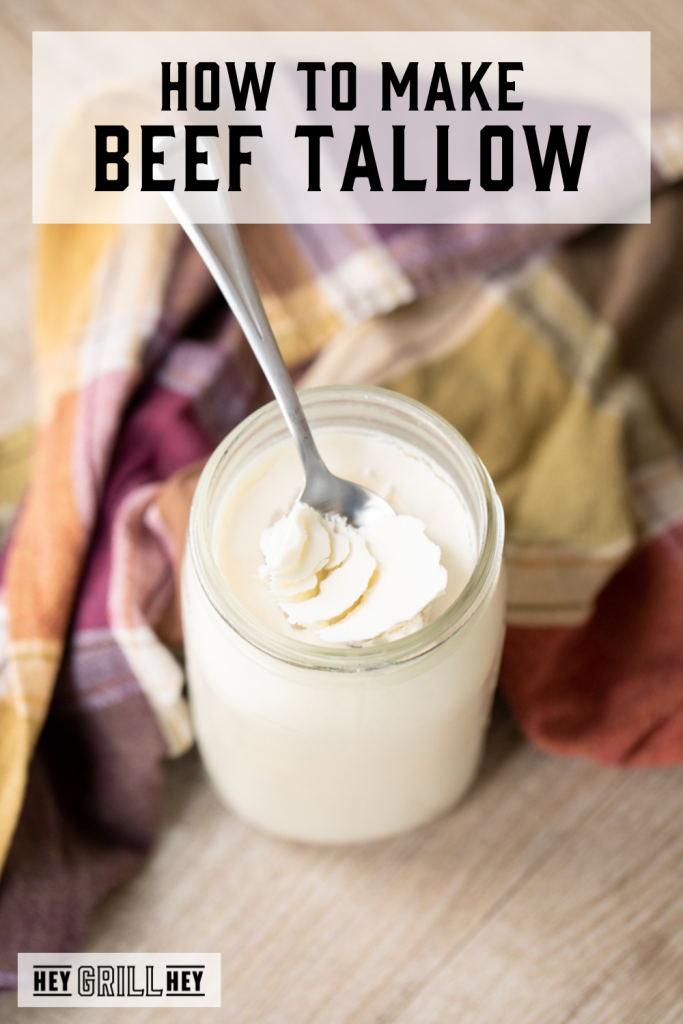
What is Beef Tallow?
“Tallow” is a fancy name for rendered fat. Specifically, beef tallow is beef fat that has been cooked down with impurities removed. Tallow is a liquid when heated and a solid when cool, making it a great substitution for oil and butter in recipes.
Tallow used to be used much more often until vegetable shortening and other oils became mainstream, but there is no reason why it can’t be used when cooking at home. It’s also a great way to use up all those trimmings leftover from Trimming a Brisket to get the most bang for your buck when purchasing a whole-packer brisket.
Beef tallow is extremely versatile. In the past, it was often used in making candles, soaps, skin products, and much more. For those of us into BBQ, beef tallow is a great item to have on hand for cooking as it’s packed full of flavor that brings a different element to sautéed veggies and cooked potatoes.
Tools for Making Beef Tallow
Making beef tallow is not difficult, but there are a few items and tools you’ll need to have on hand to help you achieve that gorgeous, smooth beef tallow as a final product. I’ve linked a few of the things you’ll need to assemble prior to rendering the tallow.
- 16-quart stock pot. The fat cooks down in a stock pot, and I recommend you use a bigger pot that you think you’ll need. You don’t want any fat splashing on your countertops or stove top, believe me.
- Fine mesh strainer. Make sure you have a pretty fine strainer on hand to strain all the large pieces of meat and other impurities that don’t cook down with the fat.
- Funnel. A funnel is a must-have when doing the final straining into your storage jar(s). Any funnel will do here. I linked a funnel/strainer combo so you can snag both and have fewer items to purchase for making this tallow.
- 100% cotton cheesecloth. Cheesecloth is the best item to use to do the final straining, but if you don’t have any on hand, you can also use a coffee filter or paper towel.
- Wide-mouth mason jars. A wide-mouth mason jar makes the perfect jar for storing your tallow. The wide mouth makes it easier to get the tallow in and out, and it’ll store nicely in the fridge.
How to Render Beef Tallow
Once you have all your tools gathered, you’re ready to render some beef tallow! Do not be intimidated by this process! Once you’ve tried it, you’ll find it’s pretty straightforward.
- Add the beef fat to a stock pot. Gather the beef fat in a large stock pot, and heat to a low simmer. Low and slow temperatures while you render or the fat will result in a browned tallow with a funkier flavor, and it won’t be as white when it cools.
- Slowly simmer to render the beef fat. During the cooking time, you will notice the fat slowly starts to render and cook. There will be a light simmer and small bubbles forming during the cooking process, but you don’t ever want a rolling boil. If your rendered fat starts bubbling too much, reduce the heat and stir well.
- Strain. Straining is important. Impurities won’t taste great and can cause the tallow to spoil faster, so make sure to strain twice. The first strain is in a fine strainer to remove any large pieces, and the second uses cheesecloth, a coffee filter, or a paper towel to get all the final small pieces removed.
- Use or store. You can use this immediately. It will remain a liquid until cooled where it will turn solid and white. Once you have your beef tallow cooked down and strained, store it in a lidded glass jar or container in the fridge for up to 3 months.
Beef Tallow Recipes
Now that you’re ready to render your own beef tallow and use it in your baking, try it out on these recipes. If the recipe doesn’t call for beef tallow specifically, you can use it in place of oil or butter.
- Skillet Potatoes. This recipe calls for cooking the potatoes in beef tallow, and oh, baby, are these the best potatoes you’ll ever have.
- Reverse Seared Steak. When making a tasty reverse-seared steak, try searing the steak in some tallow for extra flavor!
- Homemade Cornbread. You can use this beef tallow in place of butter in most recipes. Try substituting for the butter in this recipe for a killer flavor.
Homemade Beef Tallow Recipe
This recipe was created for you, backyard griller! Here at Hey Grill Hey, we’re in the business of helping you make better BBQ, feed the people you love, and become a backyard BBQ hero. You can find more of my smoking and grilling recipes here on my website (browse the Homepage for inspiration) on Instagram, YouTube or our Facebook Page.
This post was originally published in October 2020. We recently updated it with more information and helpful tips. The recipe remains the same.
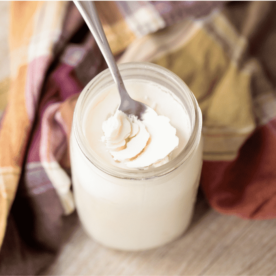
How to Make Beef Tallow
Video
Ingredients
- 3-4 pounds white beef fat or suet
Instructions
- Heat the beef fat in a large pot. Place all of your beef fat in a large 4-5 quart pot. Turn the burner on medium-low heat.
- Render the beef fat. Allow the fat to simmer at this low and slow temperature for 4 hours, stirring about every 30 minutes with a wooden spatula. If needed, scrape the spatula along the bottom of the pan to release any stuck on bits of fat or beef to prevent them from burning. Do not let your fat boil. Reduce heat and stir to maintain a very light simmer.
- Finish rendering the fat. Your tallow will be finished rendering when the fat covers most of the remaining pieces in the pan. Those pieces will be lightly browned and look crisp all over. You won't be able to see any more white or solid pieces of fat.
- Strain the rendered fat. Turn off the heat and allow the tallow to cool slightly. Prepare a large bowl fitted with a strainer. Carefully pour the tallow from the pan through the strainer into the large bowl. The strainer will catch the larger pieces of crispy rendered beef.
- Strain again into a glass jar. Fit your glass jar with a funnel and insert either a piece of cheesecloth, a coffee filter, or a paper towel. Slowly and carefully pour the tallow from the large bowl into the funnel. This step will reduce any remaining impurities in the tallow.
- Use immediately or store. Your tallow is ready to use immediately, or cover with a tight fitting lid. It should store safely in your fridge for 3 months. Use to cook skillet potatoes, sear steaks, or roast vegetables in place of other cooking fats.
Nutrition
Nutrition information is automatically calculated, so should only be used as an approximation.
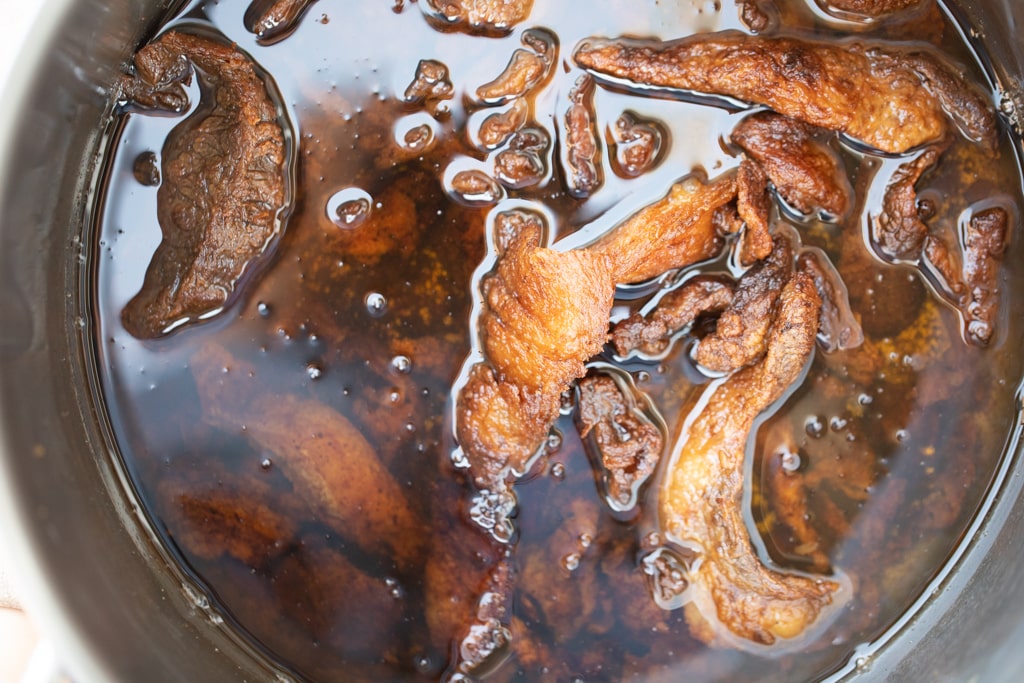
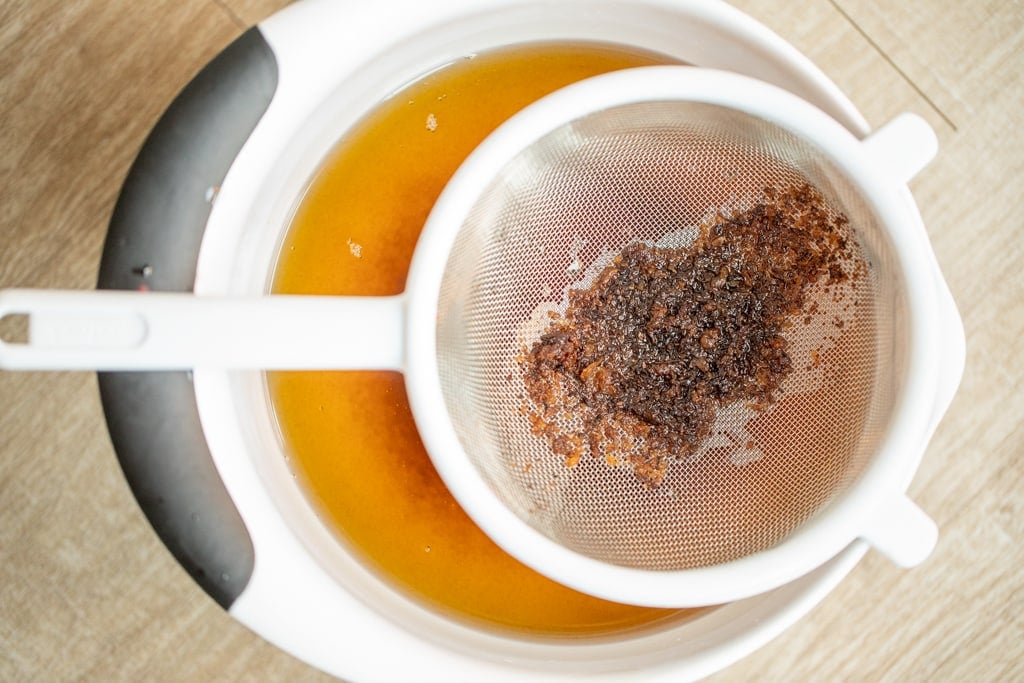
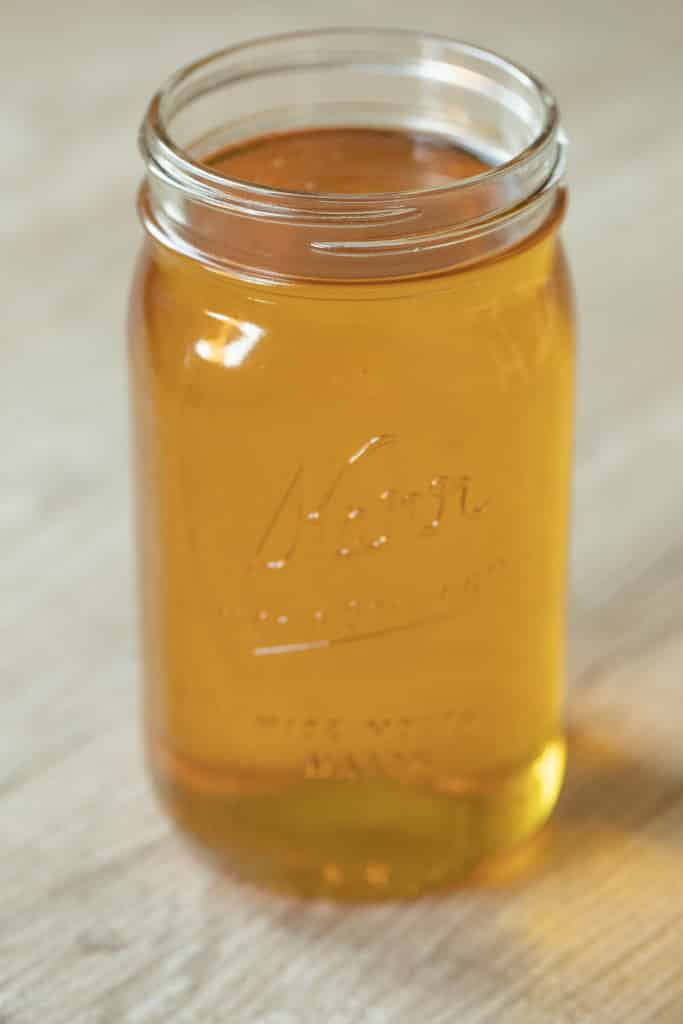

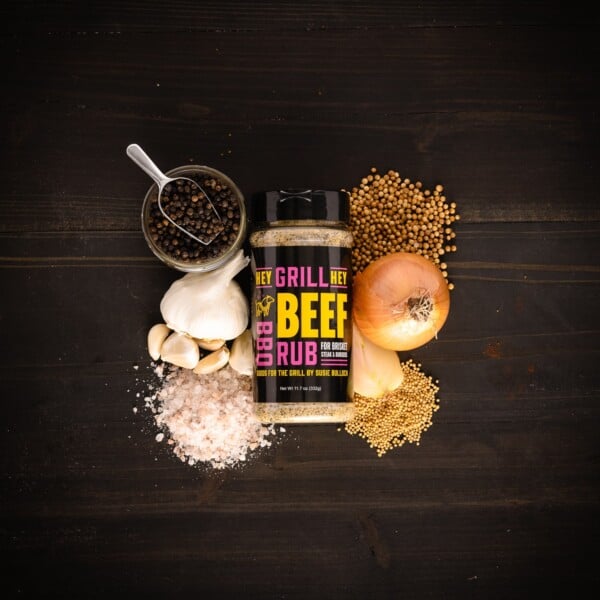
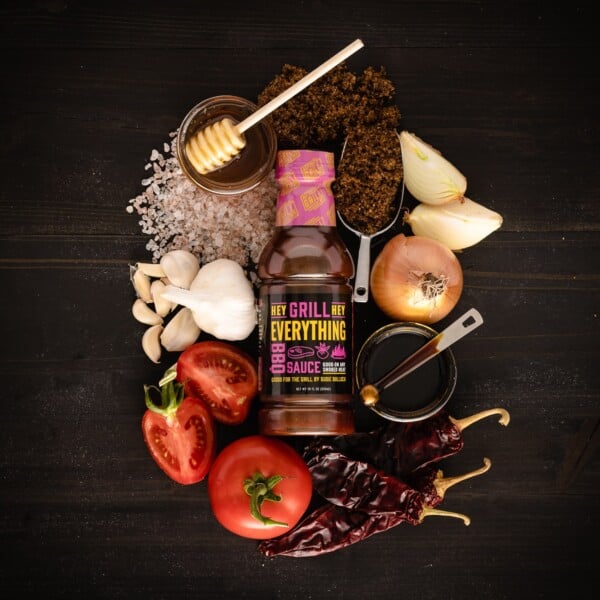
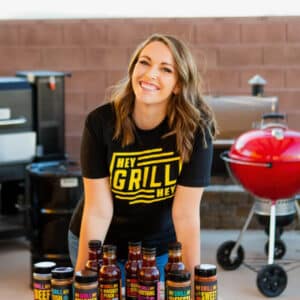

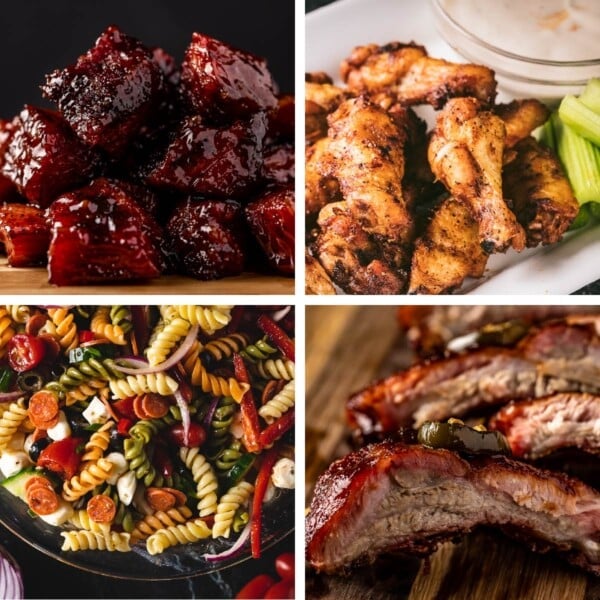
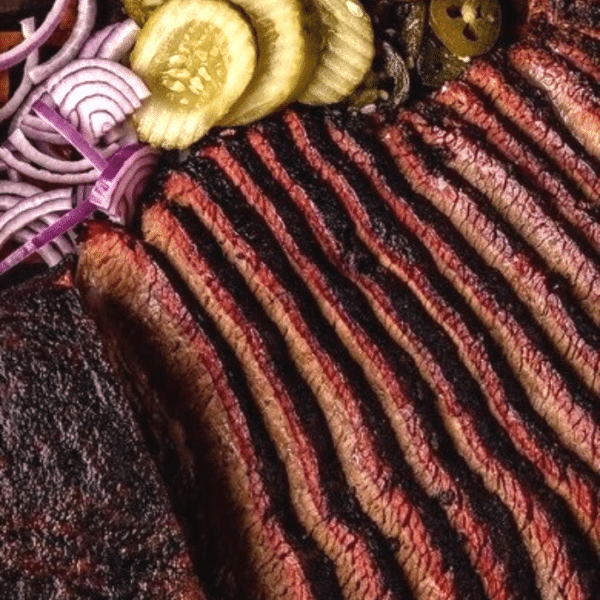

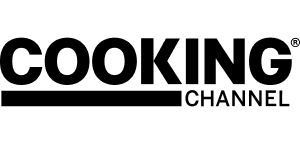




I am roasting bones to make beef broth. Tons of oil in the pans. Is this good for anything? Anything I can do to save and use it? Cook it down then put in fridge? How long?
Janet, I make bone broth in my instant pot. After removing bones and straining into gallon jar I put the jar in fridge over night. Next day I have beautiful rendered fat on top. Scoop it off and store.
I’m a newbie and can’t wait to do my grass fed cow fat and fat from a pig we just had butchered. Can you freeze the cooled/jarred tallow? How long do you think it willLast? Thx!!
Yes you can!
Just made my first batch using the thick fat trimmings from Wagyu tomahawks from my local butcher. Can’t wait to try it. Made an entire mason jar if it.
Outstanding method and used a normal strainer for the first run and a very fine mesh strainer for the second round. Made a large batch with all of the fat from our grass fed beef. Perfect and Thank you!
Beef tallow is awesome for baking! Lard was always my go-to for breads and pie crusts(even cookies) until I quit eating Pork products. shortening really only should be used for emergency candlesLOL… It is nasty stuff. I made a piecrust with tallow and I cannot tell you in words how fantastic it tasted! The texture was equally excellent. Beef tallow from now on!
Barb, are you saying you no longer use lard? That you use beef tallow for baking and frying? Thanks, Deb
It works!
Can you freeze the fat till you have enough to make a batch? Thx
Absolutely!
Coffee filter works also
Making and using your own beef tallow is the way to go, but I would caution against using paper towels to filter the tallow. Paper towels are made using a large variety of chemicals in the process, none of which are approved for human consumption. Yes it likely works well as a filter, but the heat of the liquid tallow will speed up the release of chemicals into the end product. I know that the amount of chemicals is minute, but this just isn’t the best option. Hope this is helpful.
Will this process work the same with excess pork butt fat?
Absolutely and they gotta name everything differently by calling it lard. Lol. Why is beef tallow and pork lard, I’ll never understand hahaha
Yes Pork fat boiled down can be used as crisco